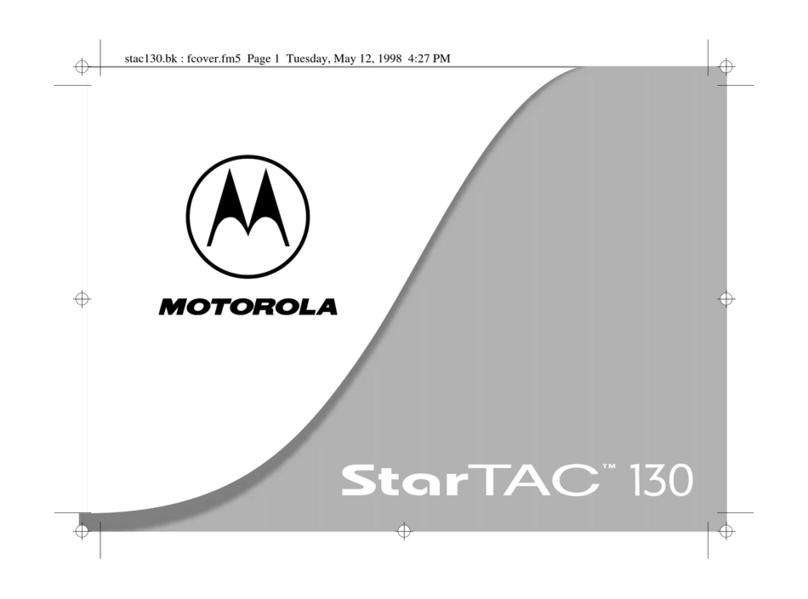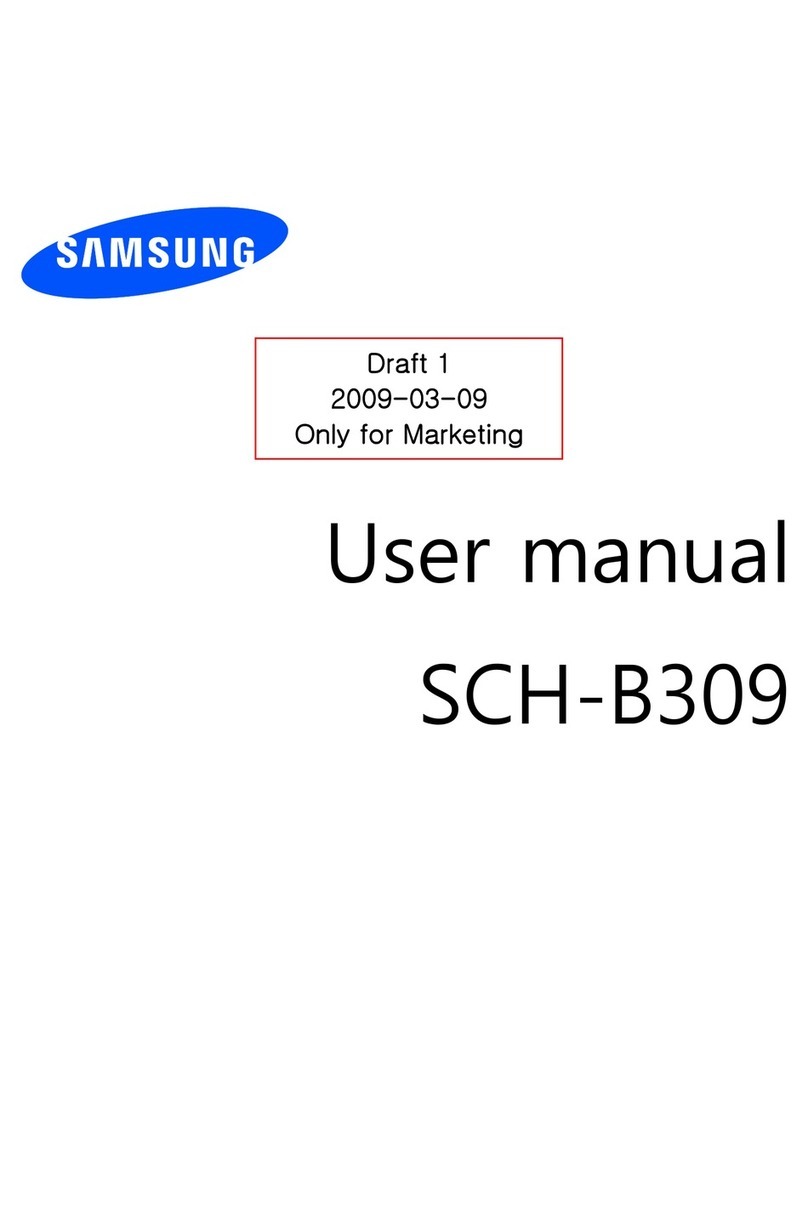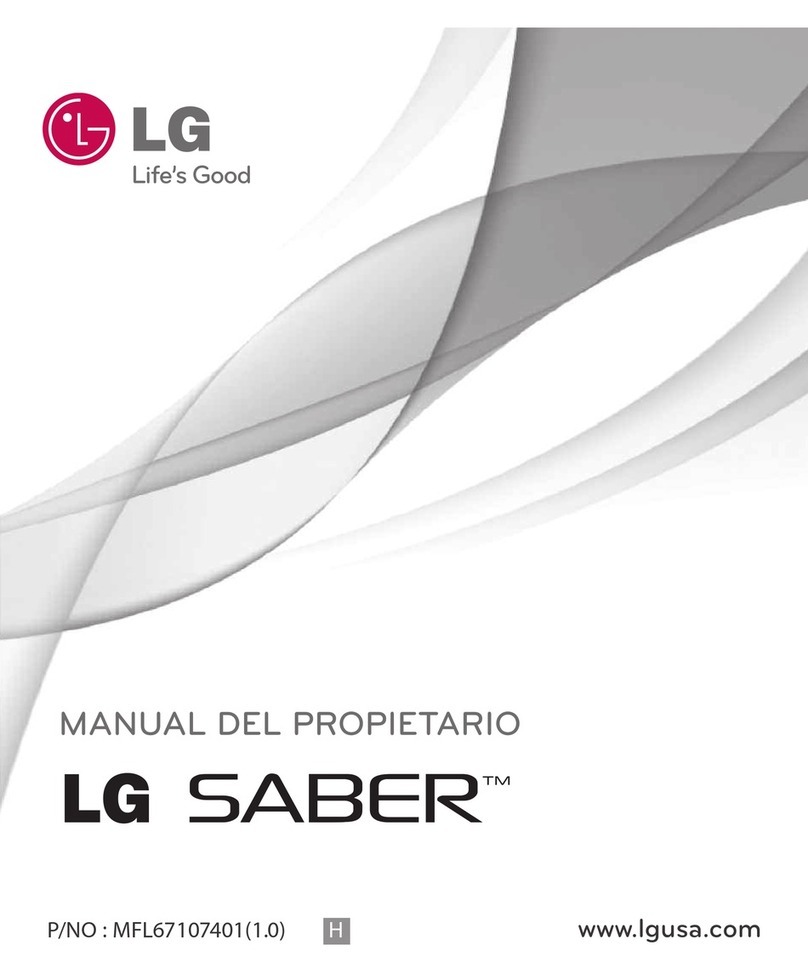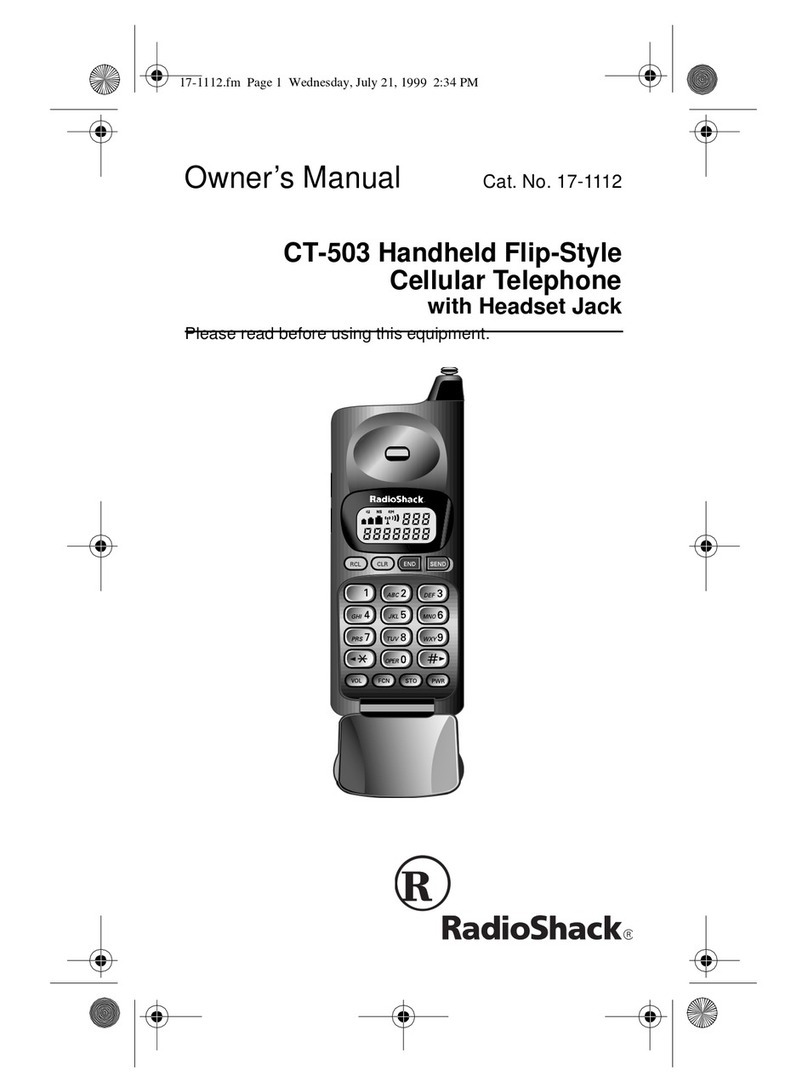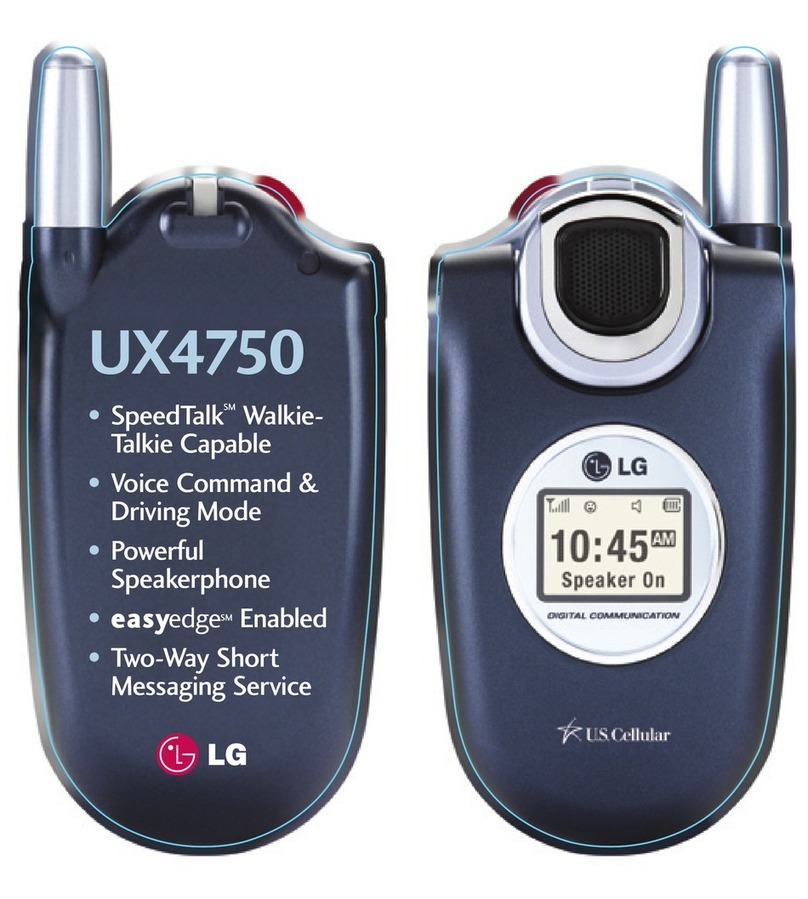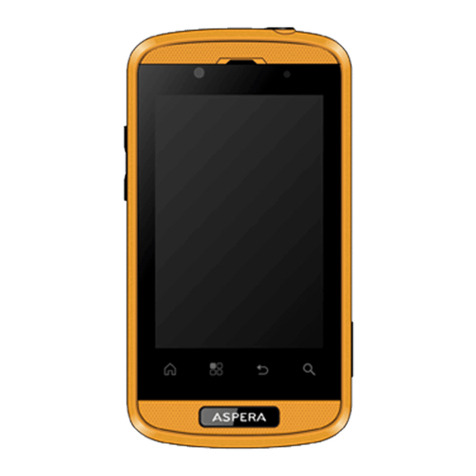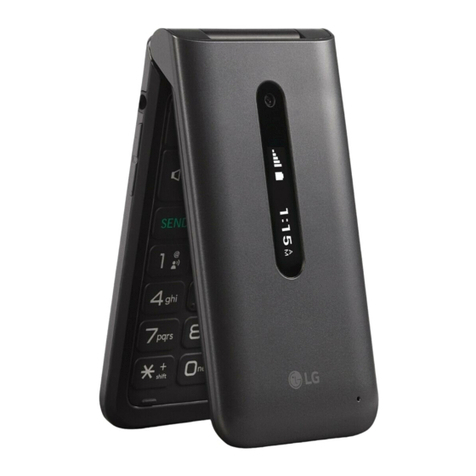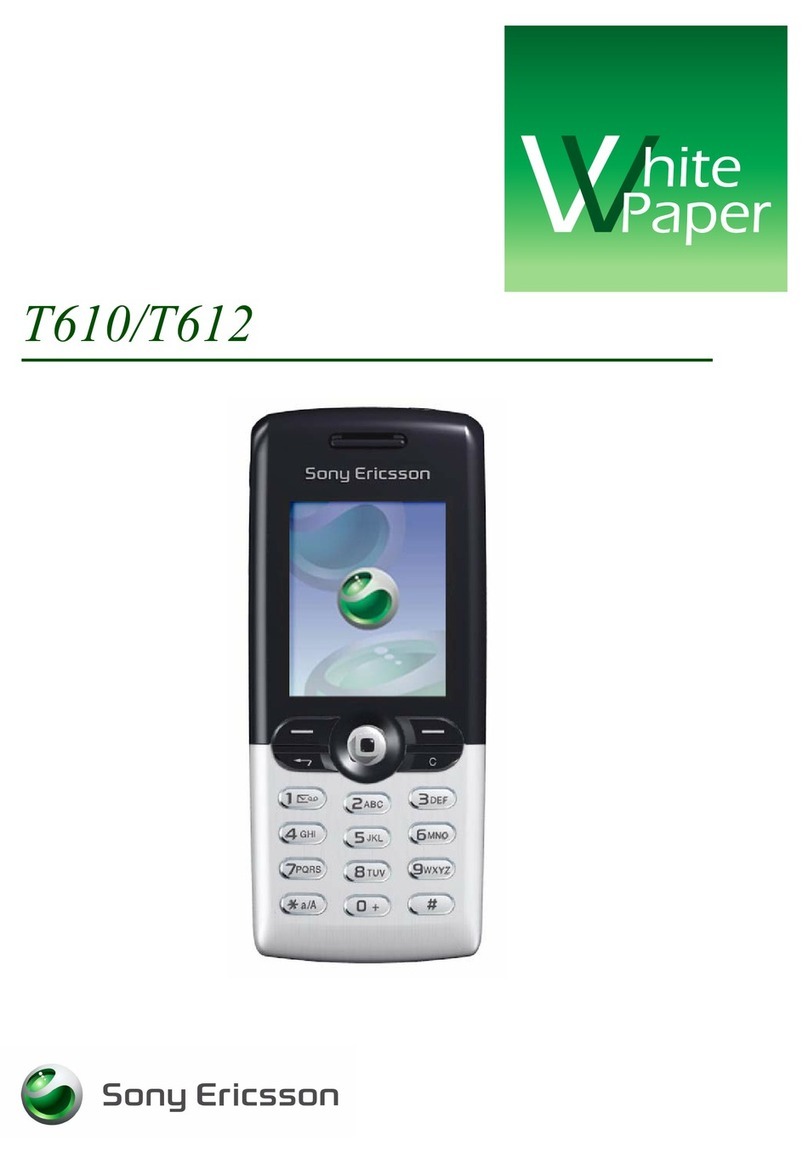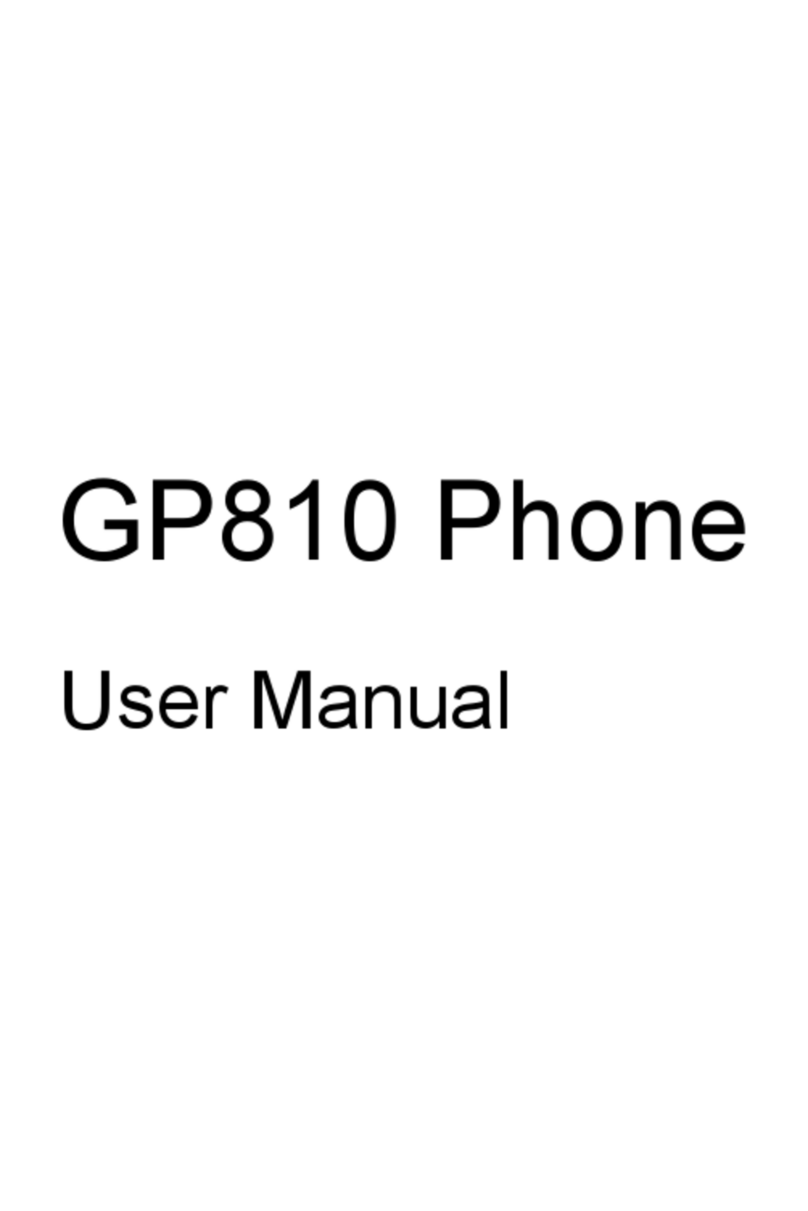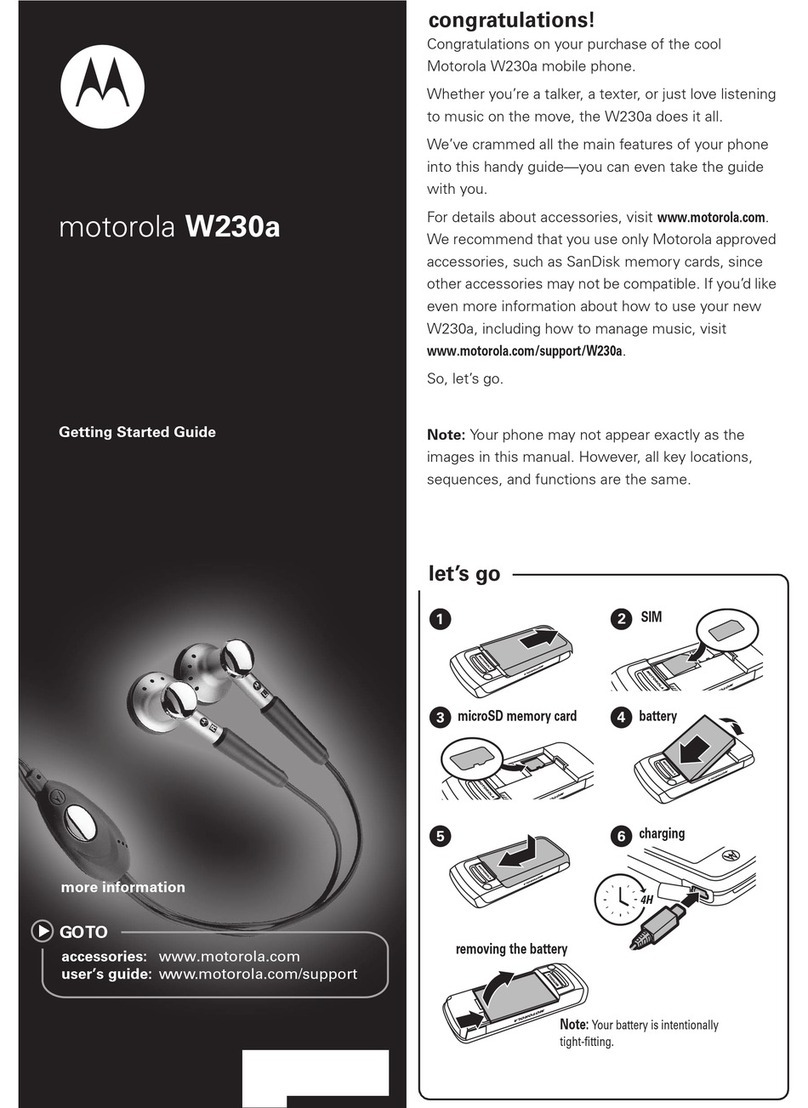BenQ mobile S68 User manual

Release 1.0
Technical Documentation 02/2006
TD_Repair_L2.5L_S68_R1.0.pdf Page 1 of 47
Service Manual
S68
Level 1-3
Release Date Department Notes to change
R 1.0 22.02.2006 BenQ Mobile S CC CES New document
Company Confidential
2005©BenQ

Release 1.0
Technical Documentation 02/2006
TD_Repair_L2.5L_S68_R1.0.pdf Page 2 of 47
Table of Content
1 Key Feature................................................................................................................................3
2 S68 Interface to Accessories....................................................................................................4
3 Unit Description of S68.............................................................................................................5
4 Exploded View of S68 ...............................................................................................................6
5Disassembly of S68...................................................................................................................7
6Assembly of S68......................................................................................................................14
7BenQ Service Equipment User Manual.................................................................................19
8GRT Software: Functionality Configuration..........................................................................20
9GRT Software: Regular Usage ...............................................................................................22
10 JPICS (Java based Product Information Controlling System)............................................27
11 International Mobile Equipment Identity, IMEI......................................................................33
12 General Testing Information...................................................................................................34
13 Introduction of Service Repair Documentation for Level 3 Basic Repairs – S68..............40
14 List of available Level 3 Basic Parts.....................................................................................41
15 Hardware Requirements.........................................................................................................41
16 S68 Board Layout...................................................................................................................42
17 SIM Card Problems .................................................................................................................43
18 IO Connector Problems .........................................................................................................44
19 B to B Connector (upper slider part) Problems....................................................................45
20 Battery Connector Problems..................................................................................................46
21 Filter EMI Problems.................................................................................................................47
Company Confidential
2005©BenQ

Release 1.0
Technical Documentation 02/2006
TD_Repair_L2.5L_S68_R1.0.pdf Page 3 of 47
1 Key Feature
Standard Systems Tri-band GSM 900/1800/1900
EGSM (GSM phase 2/phase 2+)
GPRS class 10
Vocoders FR, HR, EFR, AMR
Stand-by Time Up to 300 h (standard battery)
Talk Time Up to 300 min (standard battery)
Battery Technology
Battery Capacity Battery:Li-Ion 660 mAh
Charging time: Less than 2 h for 100%
Weight 78,5 g
Volume 44 cm³
Length 107 mm
Width 46 mm
Thickness 13,2 mm
Storage 8 MB user memory
SIM Functionality /
Security Controls
SIM Application Toolkit (class 3)
SIM lock, various levels
PIN 1 & 2 control
Ciphering A5.1, A5.2 and A5.3
SIM plug-in (3/1.8 V), SAT class 3
Antenna Integrated
Data Services Mobile Internet access (WAP 1.2.1 plus parts of 2.0)
Data download OTA via SMS or WAP
MMS release 98
EMS rel. 4.3
Data services (CSD) at 9.6 Kbps and GPRS
(up to 53.6 Kbps)
E-mail client
Display / Display Illumination 132 x 176 pixels, 262,144 colors,
enhanced TFT, transflective, high-end flat PMMA
window
Camera n / a
Connectivity USB cable / Bluetooth®
Features Basic organizer (including day, week, and month) with
Outlook® and Lotus Notes® synchronization, PIM
SMS, voice messaging (via MMS) EMS and MMS, e-mail client
Pop3
MMS supporting text, still images, voice and animations
SyncML 1.2.1 (or higher via OBEX and OTA)
Handsfree operation
Dual-speaker system for outstanding sound quality
64-chord polyphonic ringtones, MIDI
Very slim appearance
Real metal keypad and housing (brushed aluminum)
WAP 2.0 stack
Java MIDP 2.x
Wide range of headset and car kit solutions with Bluetooth®
technology
Company Confidential
2005©BenQ

Release 1.0
Technical Documentation 02/2006
TD_Repair_L2.5L_S68_R1.0.pdf Page 4 of 47
2 S68 Interface to Accessories
Original Accessories
Fashion & Carry
Leather Case FCL-720
Energy Li-Ion Battery 660 mAh EBA-120
Travel Charger (EU & UK) ETC-100/110
Car Charger Plus ECC-100
Desk Top Stand EDS-100
Handsfree Portable
Headset Basic HHS-100
Headset HHS-110
Headset Purestyle HHS-120
Headset Bluetooth® HHB-100
Headset Bluetooth® Clip HHB-130/131
Headset Bluetooth® Comfort HHB-160/161
Headset Bluetooth® HHB-700/710
Charger Adapter ECA-500 (for HS BT HHB-700/710)
Charger Adapter ECA-100 (for HS BT HHB-130/131/160/161)
Car Solutions
Car Kit Bluetooth® Easy HKW-100
Car Kit Bluetooth® Portable HKW-700
Car Kit Bluetooth® HKW-710 (successor of HKW-600)
Car Kit Bluetooth® SIM HKW-720
Car Kit Portable HKP-100
Mobile Holder HMH-100
Office Data Cable DCA-100 (RS232)
Data Cable USB DCA-140
Sync Station DSC-100
Company Confidential
2005©BenQ

Release 1.0
Technical Documentation 02/2006
TD_Repair_L2.5L_S68_R1.0.pdf Page 5 of 47
3 Unit Description of S68
Highly attractive premium design: very slim phone (13 mm) with real metal (brushed aluminum)
surface and keypad.
Focusing on the core and most convenient business functions, PIM, Bluetooth®, Fax and Document
Viewer, and other business applications that enrich professional life.
New simplified and intuitive menu structure.
Fast Dialing™ key, voice messaging (via MMS), dictaphone, and e-mail client.
Excellent overall ergonomics.
Superb sound quality (including handsfree talking).
Optimal visibility of content display under all lighting conditions.
Company Confidential
2005©BenQ

Release 1.0
Technical Documentation 02/2006
TD_Repair_L2.5L_S68_R1.0.pdf Page 6 of 47
4 Exploded View of S68
Without illustration:
Shielding Cover RF
Shielding Cover BB Top
Shielding Cover BB BOT
Shielding Cover BT
Company Confidential
2005©BenQ

Release 1.0
Technical Documentation 02/2006
TD_Repair_L2.5L_S68_R1.0.pdf Page 7 of 47
Disassembly of S68
All repairs as well as disassembling and assembling have to be carried out in an ESD
protected environment and with ESD protected equipment/tools. For all activities the
international ESD regulations have to be considered.
For more details please check information in c – market
https://market.benqmobile.com/SO/welcome.lookup.asp
There you can find the document “ESD Guideline”.
Step 1
Remove Battery Cover and Battery.
Step 2
Remove screws with the Torque –
Screwdriver.
T5+
Company Confidential
2005©BenQ

Release 1.0
Technical Documentation 02/2006
TD_Repair_L2.5L_S68_R1.0.pdf Page 8 of 47
Step 3
Disassemble Upper Case from Lower Case.
Step 4
Step 5
To avoid scratches, it is mandatory to place
a protection foil onto the display!
Company Confidential
2005©BenQ

Release 1.0
Technical Documentation 02/2006
TD_Repair_L2.5L_S68_R1.0.pdf Page 9 of 47
Step 6
Remove Keypad MMI by using Tweezers
carefully.
Step 7
Remove Keypad by using Tweezers
carefully.
Step 8
Use Tweezers to remove Earpiece.
Company Confidential
2005©BenQ

Release 1.0
Technical Documentation 02/2006
TD_Repair_L2.5L_S68_R1.0.pdf Page 10 of 47
Step 9
.Remove PCB from Lower Case.
Step 10
Step 11
Disconnect Flex Cable from PCB socket by
using Tweezers.
Company Confidential
2005©BenQ

Release 1.0
Technical Documentation 02/2006
TD_Repair_L2.5L_S68_R1.0.pdf Page 11 of 47
Step 12
Loosen Display Module from PCB with
Alternative Opening Tool.
Step 13
Step 14
Remove Ringer.
Company Confidential
2005©BenQ

Release 1.0
Technical Documentation 02/2006
TD_Repair_L2.5L_S68_R1.0.pdf Page 12 of 47
Step 15
Remove Vibramotor by using Tweezers.
Step 16
Use Tweezers to remove Microphone.
Step 17
Use Tweezers to remove Side Keys and
Side Keys MMI.
Company Confidential
2005©BenQ

Release 1.0
Technical Documentation 02/2006
TD_Repair_L2.5L_S68_R1.0.pdf Page 13 of 47
Step 18
Overview Lower Parts
Overview Upper Parts
Upper Case Shell
Ke
yp
a
d
Ringer Side Ke
y
s
Side Switch
Microphone Display
Module
Vibramoto
r
RF Control
Board S68
Ke
yp
ad MMI Screws
Batter
y
Lower Case
Shell
Batter
y
Cove
r
Ear
p
iece
Company Confidential
2005©BenQ

Release 1.0
Technical Documentation 02/2006
TD_Repair_L2.5L_S68_R1.0.pdf Page 14 of 47
6 Assembly of S68
Step 1
Assemble Ringer by using Tweezers.
Step 2
Assemble Microphone by using Tweezers
Step 3
Assemble Vibramotor by using Tweezers.
Company Confidential
2005©BenQ

Release 1.0
Technical Documentation 02/2006
TD_Repair_L2.5L_S68_R1.0.pdf Page 15 of 47
Step 4
Assemble Side Keys and Side Keys MMI
Step 5
Assemble Display Module on PCB.
Step 6
Connect Flex Cable with PCB socket.
Company Confidential
2005©BenQ

Release 1.0
Technical Documentation 02/2006
TD_Repair_L2.5L_S68_R1.0.pdf Page 16 of 47
Step 7
Assemble Keypad.
Step 8
Assemble Keypad MMI.
Step 9
Assemble Earpiece.
Company Confidential
2005©BenQ

Release 1.0
Technical Documentation 02/2006
TD_Repair_L2.5L_S68_R1.0.pdf Page 17 of 47
Step 10
Attention! Before assembling the Display
Module it is mandatory to remove the
Display Foil!
Step 11
Place PCB with assembled Display in the
Upper Case.
Step 12
Assemble Lower Case onto the Upper
Case.
Company Confidential
2005©BenQ

Release 1.0
Technical Documentation 02/2006
TD_Repair_L2.5L_S68_R1.0.pdf Page 18 of 47
Step 13
Place screws with the Torque –
Screwdriver.
T5+
Step 14
Assemble Battery.
Step 15
Assemble Battery Cover.
Company Confidential
2005©BenQ

Release 1.0
Technical Documentation 02/2006
TD_Repair_L2.5L_S68_R1.0.pdf Page 19 of 47
7 BenQ Service Equipment User Manual
Introduction
Every LSO repairing BenQ handset must ensure that the quality standards are observed.
BenQ has developed an automatic testing system that will perform all necessary
measurements. This testing system is known as:
BenQ Mobile Service Equipment
•For disassembling / assembling
Torque – Screwdriver
Part Number: F 30032 – P 228 – A1
Opening tool
(Case opening without destroying)
Part Number: F 30032 – P 38 – A1
Alternative Opening tool
Part Number: F30032 – P583 – A1
Tweezers
•For testing
All mobile phones have to be tested with the GRT – Software. The service partner is
responsible to ensure that all required hardware is available.
For additional Software and Hardware options as well as the supported GRT equipment,
please check the GRT User manual.
Company Confidential
2005©BenQ

Release 1.0
Technical Documentation 02/2006
TD_Repair_L2.5L_S68_R1.0.pdf Page 20 of 47
8 GRT Software: Functionality Configuration
Sep 1: Select „Settings >> SWUP / JPICS”
Step 2: Proceed as follows:
¾Select all required Variants you need to repair (click onto the “+” in
front of the product name.
¾Check Com-Port setting. If necessary change it
¾Check speed setting. Select always the lowest speed if your PC
does not have a fast serial card
¾Enter the value for “JPICS Server Timeout”. Be careful, this value
defines how long GRT tries to reach the server until you get an
error message. Do not select a very long time
2
4
1
3
Company Confidential
2005©BenQ
Table of contents
Other BenQ mobile Cell Phone manuals

BenQ mobile
BenQ mobile S75 User manual
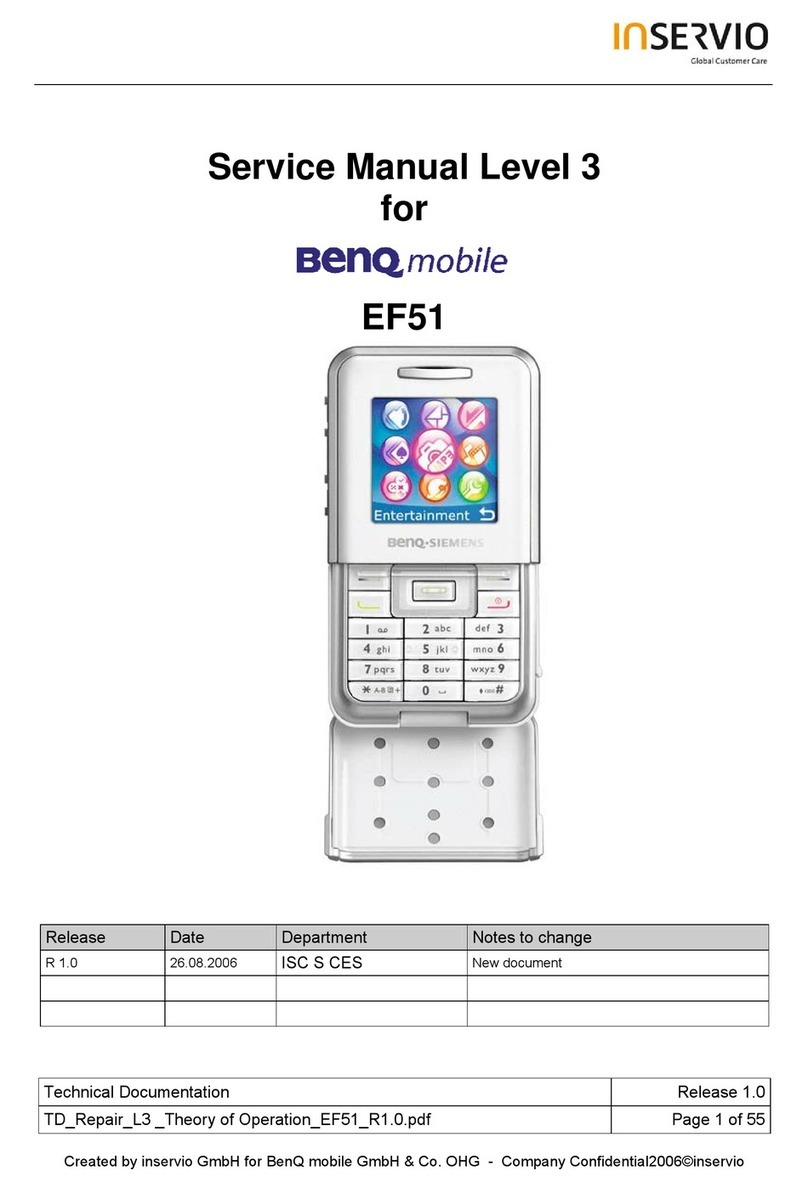
BenQ mobile
BenQ mobile EF51 User manual

BenQ mobile
BenQ mobile EF51 User manual
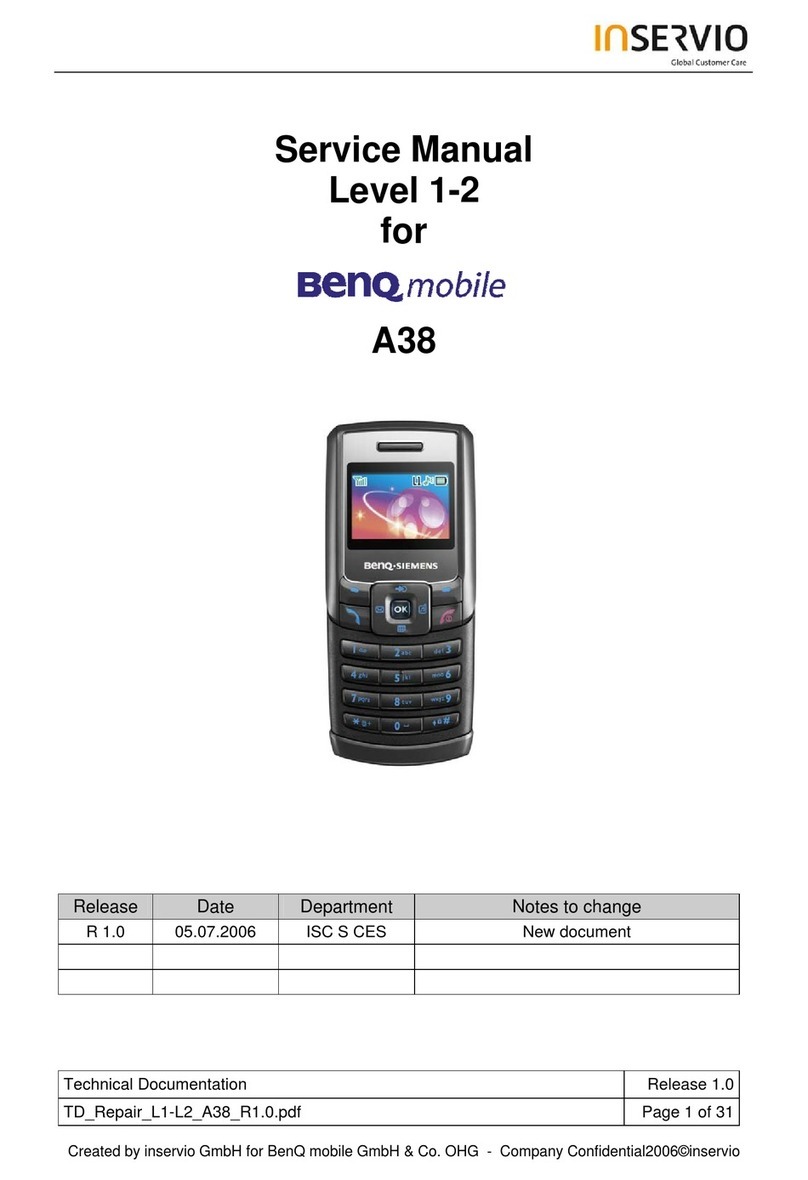
BenQ mobile
BenQ mobile A38 User manual

BenQ mobile
BenQ mobile S88 Setup guide

BenQ mobile
BenQ mobile A38 User manual
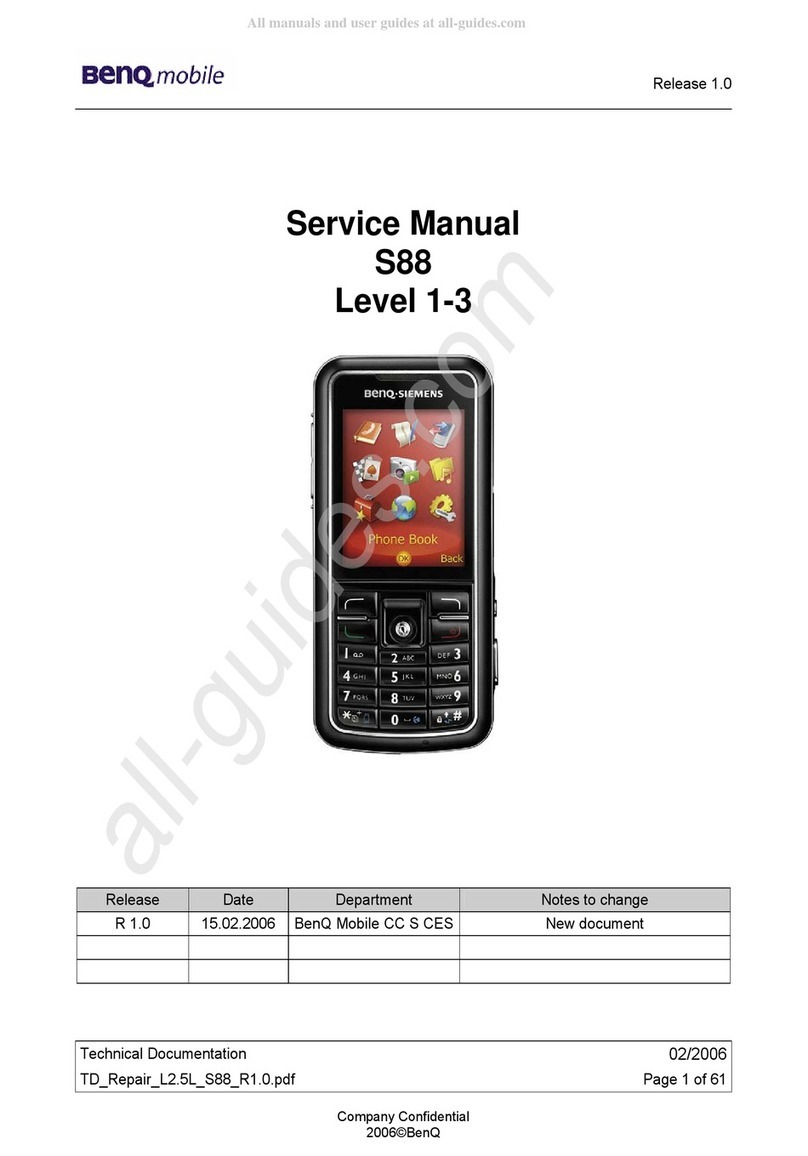
BenQ mobile
BenQ mobile S88 User manual
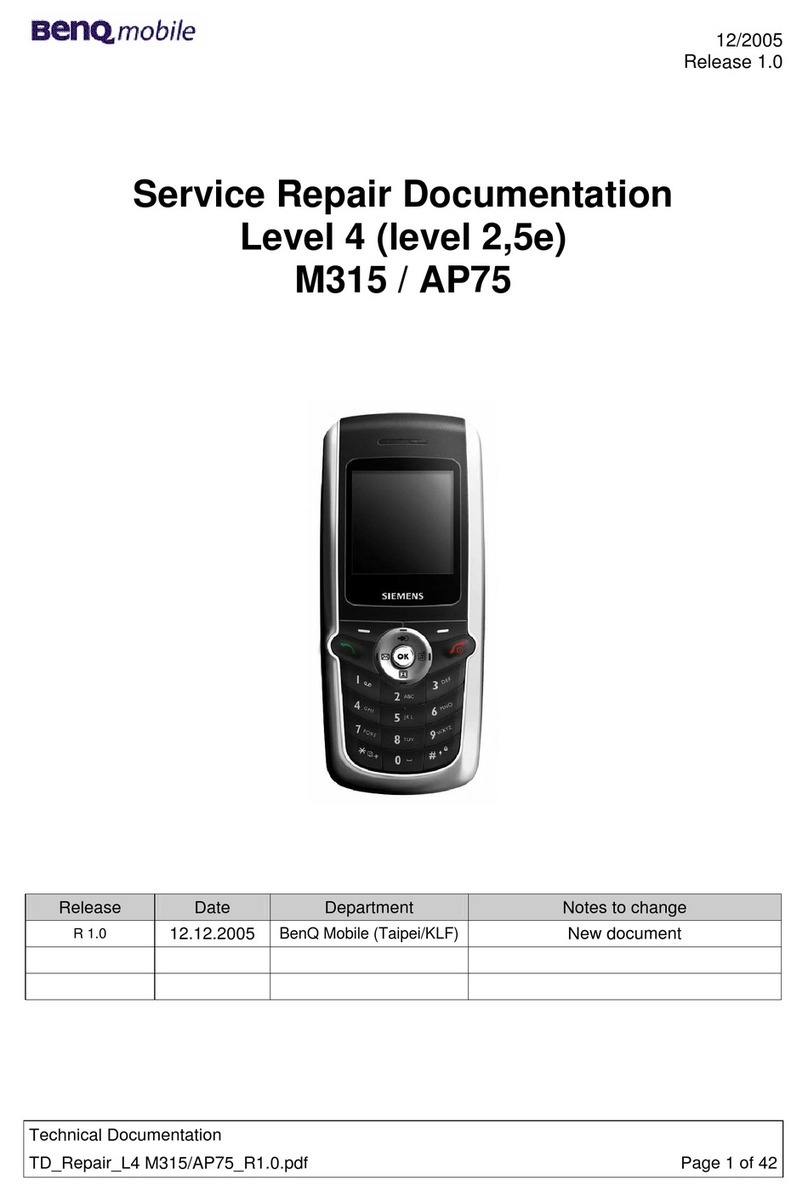
BenQ mobile
BenQ mobile M315 Setup guide
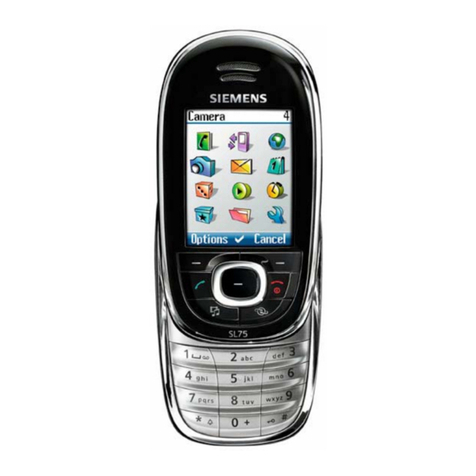
BenQ mobile
BenQ mobile SL75 Setup guide

